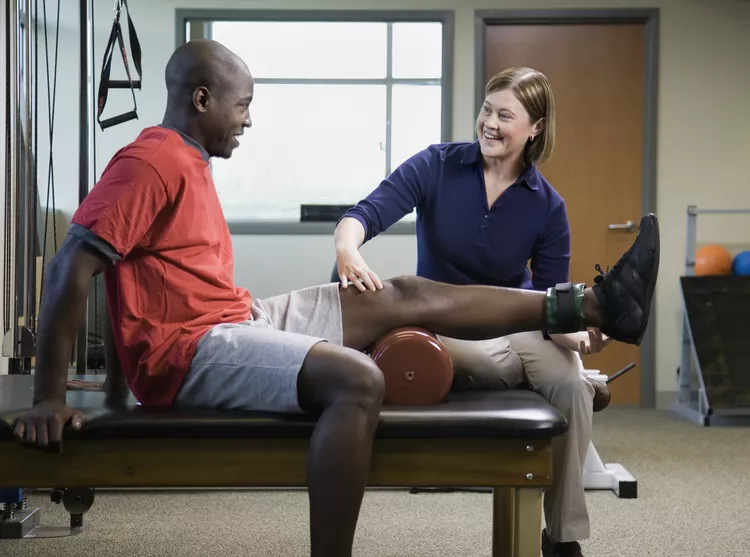When it comes to recovering from sports injuries or musculoskeletal issues, there are two primary paths one can take: sports medicine and physical therapy. Both fields are dedicated to helping individuals regain their physical abilities and lead active lives, but they differ in their approaches and specialties. Choosing the right path to recovery is crucial, as it can significantly impact the speed and effectiveness of your rehabilitation journey.
The Team Behind Athletes:
Sports medicine is a specialized branch of medicine that focuses on the treatment and prevention of injuries related to sports and physical activities. This field encompasses a wide range of professionals, including sports medicine physicians, orthopedic surgeons, physical therapists, athletic trainers, and more. These experts work together to diagnose, treat, and manage sports-related injuries and conditions.
Sports medicine physicians are at the forefront of this field. They are medical doctors with specialized training in sports-related injuries and musculoskeletal conditions. When you’re dealing with a severe sports injury, such as a torn ligament or a fractured bone, a sports medicine physician is the specialist you’ll likely see first. They can provide comprehensive medical evaluations, order diagnostic tests like X-rays and MRIs, and recommend surgical interventions if necessary.
Prevention as a Priority:
One of the key focuses of sports medicine is injury prevention. Sports medicine professionals work closely with athletes of all levels to identify potential risk factors and develop strategies to reduce the likelihood of injuries. This includes optimizing training routines, educating athletes on proper techniques, and assessing biomechanical factors that may contribute to injuries.
Sports medicine also plays a vital role in managing chronic conditions, such as osteoarthritis, which can affect athletes and active individuals. Physicians in this field explore both surgical and non-surgical interventions to help patients manage pain and maintain their physical function.
Exploring the World of Physical Therapy
- Rehabilitation and Recovery:
Physical therapy, on the other hand, is a healthcare profession dedicated to helping individuals recover from injuries and regain their mobility and strength. Physical therapists are highly trained professionals who assess, diagnose, and treat musculoskeletal conditions through non-surgical methods. They create personalized treatment plans that involve exercises, stretches, manual techniques, and modalities like heat and ultrasound.
Physical therapists are essential not only in sports but also in various healthcare settings, such as hospitals, outpatient clinics, and rehabilitation centers. They work with patients of all ages and abilities, not just athletes. Their primary goal is to improve physical function and quality of life.
- Individualized Care and Functional Goals:
One of the hallmarks of physical therapy is its emphasis on individualized care. Physical therapists assess each patient’s unique condition, goals, and limitations before creating a tailored treatment plan. Whether you’re recovering from a sports injury, surgery, or a chronic condition, your physical therapist will work closely with you to address your specific needs and concerns.
In addition to rehabilitation, physical therapy also focuses on improving overall physical fitness and preventing future injuries. Physical therapists educate their patients about proper body mechanics and exercise techniques, empowering them to take an active role in their recovery and long-term health.
Choosing the Right Path for You
- When to Seek Sports Medicine:
The choice between sports medicine vs physical therapy largely depends on the nature and severity of your injury or condition. Here are some guidelines to help you decide:
Sports Medicine: Seek the expertise of a sports medicine physician if you have a severe injury that may require surgical intervention, such as a torn ACL, dislocated joint, or a complex fracture. They can provide a definitive diagnosis and guide you through the surgical process if necessary.
Physical Therapy: If your injury is less severe or has already been treated surgically, physical therapy can play a crucial role in your recovery. Physical therapists excel in post-operative rehabilitation, helping you regain strength, mobility, and function.
Prevention and Maintenance: Both sports medicine and physical therapy can be valuable for injury prevention and long-term health. If you’re looking to optimize your training, prevent injuries, or manage chronic conditions, consulting with professionals in both fields may be beneficial.
Ultimately, the choice between sports medicine and physical therapy is not always an either-or decision. Many patients benefit from a collaborative approach, where sports medicine physicians and physical therapists work together to provide comprehensive care.
Conclusion:
In the realm of sports medicine and physical therapy, the right path to recovery depends on your specific needs, goals, and the nature of your injury or condition. Sports medicine offers expertise in diagnosing and managing severe injuries, while physical therapy specializes in rehabilitation and personalized care. Remember that these fields often work in synergy, with the common goal of helping you get back on your feet, whether you’re an elite athlete or simply striving for an active and healthy lifestyle. Prioritize your well-being, seek professional guidance, and make an informed decision that sets you on the path to a full and active recovery.


 Home
Home










